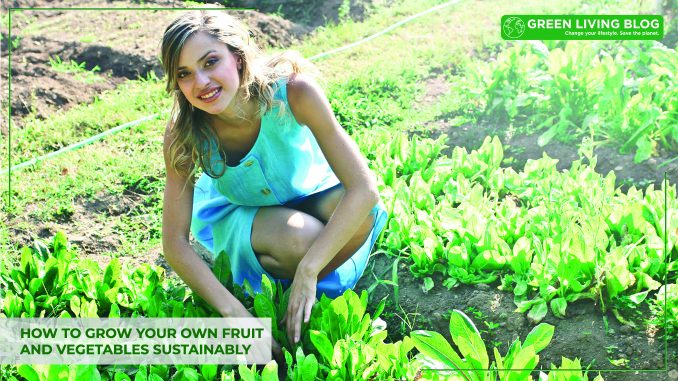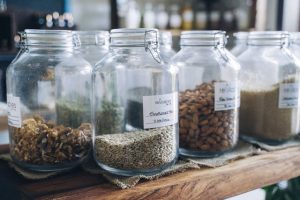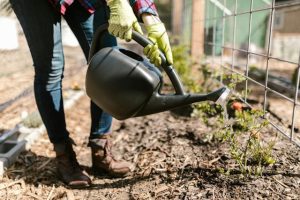
It’s easy to start growing your own fruit and vegetables. And don’t worry, it is not a sign of getting old. It’s a sign of taking up a new hobby that’ll improve your physical and mental health.
Studies have proven gardening and growing your own produce is an effective way to channel positive energy and contribute to the biodiversity within your environment.
So, visit your local garden centre or building merchants for tools, equipment and other sundries and make a start on a self-sufficient lifestyle.
This guide will walk you through the essential steps, offering insights and tips to ensure a sustainably sourced bountiful harvest.
1. Seed Selection

Your gardening and landscaping journey begins with picking the right seeds. This choice is more than just picking your favourites; it’s about understanding what thrives in your neck of the woods.
Consider your local climate and soil type. Typically, garden centres aren’t going to sell seeds that you can’t grow in your country. Even so, research and find out what types of fruit and vegetables grow in which climates.
Whether you’re browsing your local garden centre or scrolling through an online catalogue, choosing your seeds from a reputable source will ensure you yield the freshest produce – it all starts with the quality of the seed.
2. Soil Preparation
A thriving and environmentally-friendly garden starts from the ground up, literally. Your soil is your foundation, so make it rich in nutrients. Think about mixing in compost for a natural fertility boost.
Good drainage is vital to avoid waterlogged roots and don’t forget to aerate your soil. When your soil is ready, it’s like rolling out the red carpet for your plants to grow strong and healthy. Avoid using harsh chemicals and pesticides – stick to natural fertilisation for fresh produce.
3. Planting and Watering

Planting your seeds isn’t as simple as throwing them on the ground. Follow the guidelines for how deep and far apart to plant them – each seed is a little different. You’ll also be able to Google the ideal amount of water to use for planting and future hydration. Too little water and they thirst; too much, and they might drown. A drip irrigation system can be a game-changer here – giving your plants just the right amount of water without overdoing it.
4. Protecting Your Garden
As your garden grows, it becomes its own little world, one that attracts friends and foes. Here’s where you get smart with nature. Use companion planting to keep pests away naturally. Welcome good bugs like ladybugs, which are like tiny knights defending your garden from harm. Keep an eye out for any signs of disease or pests – catching them early is key to keeping your garden happy and healthy.
5. Harvesting

And then comes the best part – harvesting. There’s a certain magic in picking fruits and vegetables at their perfect moment of ripeness and knowing you were the one to grow them. Sharing your bounty with friends and family? That’s the icing on the cake. It’s a moment of pride and joy, to see the results of your dedication and care.
So, there you have it – your pathway to a fruitful and sustainable garden. With a bit of knowledge and lots of love, you’re all set to create a vibrant space full of life and flavour. Happy gardening!
![]()
Author Profile

- Eco Warrior by day, Eco Blogger by night trying to get the eco balance right.
Latest entries
 EnvironmentMarch 31, 20255 Sustainable Materials for Building Your Dream Eco-Friendly Pergola
EnvironmentMarch 31, 20255 Sustainable Materials for Building Your Dream Eco-Friendly Pergola Best practicesMarch 25, 202510 Green Tips to Live a More Sustainable Lifestyle
Best practicesMarch 25, 202510 Green Tips to Live a More Sustainable Lifestyle Green Expert GuidesMarch 12, 2025Flexible Solar Panels for Trucks: Benefits of Smarter Solar Energy Solutions for the Trucking Industry
Green Expert GuidesMarch 12, 2025Flexible Solar Panels for Trucks: Benefits of Smarter Solar Energy Solutions for the Trucking Industry Green Home GuidesFebruary 27, 2025How Sustainable Heating is made simple with Bioethanol Fireplaces
Green Home GuidesFebruary 27, 2025How Sustainable Heating is made simple with Bioethanol Fireplaces





Leave a Reply
You must be logged in to post a comment.